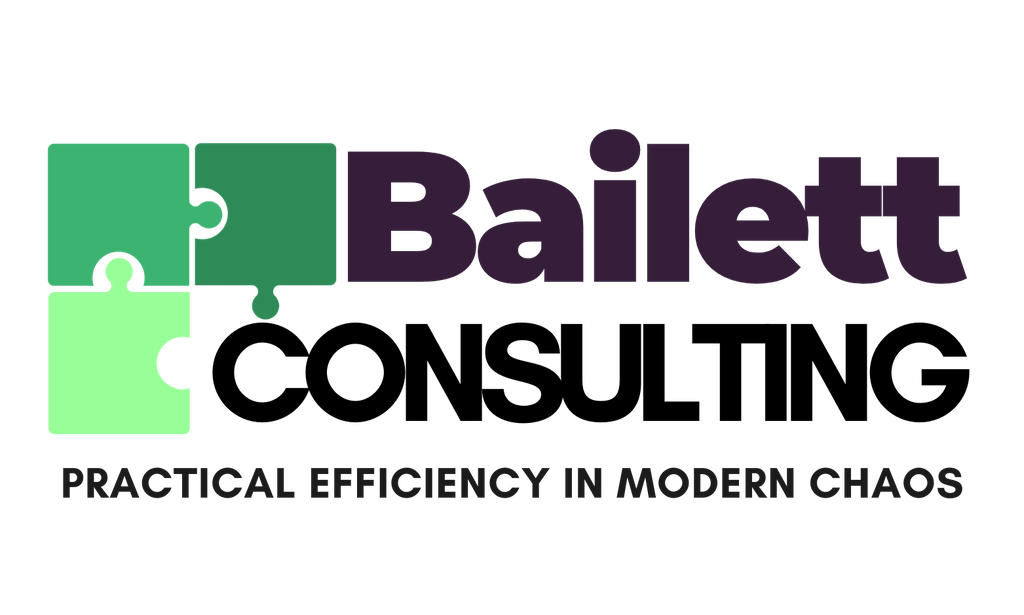Smarter Time Blocking:
Structuring Your Day for Increased Productivity
Time blocking is one of the major productivity techniques. For many people, however, time blocking can quickly fall apart when real life happens. Rigid schedules, unexpected interruptions, and unrealistic time estimates often lead to overscheduling and frustration. Instead of abandoning time blocking altogether, learn to make it work for you. The key to effective time blocking is about building a flexible system that accounts for how you actually work and anticipating the inevitable interruption.
Why Traditional Time Blocking Often Fails
Most time blocking methods and people assume that once a task is scheduled, it will go exactly as scheduled. If we are honest, we know that rarely happens. The three biggest reasons time blocking often fails us are:
Scheduling what we “want” to happen instead of a real day – Life can be unpredictable, and often rigid schedules break easily when the inevitable unexpected happens.
Ignoring energy levels – Not all hours of the day are created equal for everyone. Scheduling deep work during a low energy period leads to lack of productivity, frustration, and wasted time.
No built in flexibility – When meetings run over, an interruption happens, or tasks take longer than expected, a packed schedule leaves no room to adjust.
The solution? A smarter, flexible time blocking system that prioritizes high impact work while allowing for interruptions.
How to Time Block for Real Life
1. Start with Energy Based Time Blocking
Instead of scheduling tasks randomly or when they “should” be done, align them with your natural energy levels. Some people are most productive in the morning, while others hit their peak in the afternoon. Identify when you do your best work and schedule your productive work during those times.
✅ Morning Person? Block your productive work time in the first half of the day.
✅ Afternoon Person? Do admin work in the morning and reserve the afternoon for your productive work time.
✅ Low Energy in the Afternoon? Schedule movement breaks or light tasks to ward off avoidance techniques like scrolling social media.
2. Time Block for Repeating Tasks & Habits
The most important work you do is the most effective with repetition. Make success a habit by creating consistent, repeating time blocks for key activities.
Examples:
Monday CEO Time – Review goals, financials, and big picture planning.
Midweek Content Creation – Dedicate time for marketing, social media, or creative work.
Friday Follow Ups and Planning – Reach out to clients, check in with your team, and prepare for the next week.
Consistency leads to success. If the task is a priority, schedule it weekly!
3. Use Pick Up Time Blocks for Real Life
Unexpected meetings, client emergencies, and unplanned tasks happen. Instead of letting one disruption ruin your whole schedule, build in Pick Up Time Blocks to absorb the overflow.
✅ Schedule a 30 minute “Pick Up Block” in the afternoon. (or 1.5 -2 hours at the end of each week) Use this time to finish any tasks that took longer than expected or have not been completed yet.
✅ Leave open time at the end of the day. If you finish early, you get free time. If you still need to complete items from the day there is time to wrap up.
This way when life happens, your schedule can flex with you.
4. Batch Similar Tasks to Avoid Context Switching
Switching between different types of work drains mental energy. Instead of scattering tasks throughout the day or jumping back and forth between tasks, group similar activities together for better efficiency.
Examples:
Emails & Admin: Answer emails, voicemails, texts, and small tasks in one block instead of throughout the day as they happen.
Meetings: Batch schedule meetings on specific days, in the mornings only, or the afternoons only to avoid meetings happening all day everyday.
Deep Work Sessions: Block time for focused productive work. This would be uninterrupted work time so you can get the work done that makes you money.
Batching reduces mental fatigue, allows you to maintain control of your day, and helps you stay in the zone longer.
5. Protect Your Non Negotiable Time
Some scheduled time needs to remain non negotiable, for our own sanity and should never be pushed aside. Identify the tasks that directly impact your success and protect those time slots at all costs.
Examples:
Revenue Generating Activities: Sales calls, marketing efforts, or strategic work. These would be tasks done during Deep Work Time.
Creative Work: If producing content or developing ideas is essential, make this time non negotiable as well.
Self Care: Prioritize rest, exercise, and anything that helps sustain energy over the long term. For example, meal and snack preparation.
When something comes up, everything else can move with the exception of these non negotiables. These non negotiables happen at the time scheduled no matter what.
Example of a Smarter, More Realistic Schedule
📌 9:00-9:30 AM: Planning (Non-Negotiable)
📌 9:45-11:15 AM: Deep work (Goal related task)
📌 11:30-12:00 PM: Emails & admin (Batch task)
📌 12:00-1:00 PM: Lunch & recharge (Energy reset)
📌 1:30-3:30 PM: Meetings or networking (Scheduled interaction)
📌 3:45-3:15 PM: Pick Up Time Block (Contingency)
📌 3:15-4:45 PM: Project work or execution (Focused block)
📌 5:00-5:30 PM: Wrap-up & next-day prep (End-of-day routine)
Make Time Blocking Work for You
The perfect schedule that never moves may not exist in real life. However, a system that helps you work smarter and prioritize your life and business does exist. By implementing a more flexible and strategic approach, you will turn time blocking into a tool that helps you stay focused, reduce stress, and achieve more in less time.
Take control of your schedule and make time work for you!
Are you ready to achieve your goals and learn how to block your time for you? Sign up for the upcoming session of Accountability Champions!






